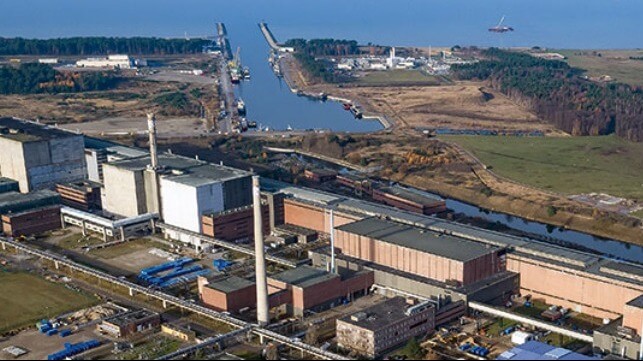Work Begins to Upgrade Germany’s Lubmin Port for FSRU Operations

Construction work started this week in the eastern German port of Lubmin for the first completely funded FSRU terminal as part of Germany’s plan to replace a portion of its Russian gas supply with imports. When the project was announced in July, Deutsche ReGas, which is leading the effort, promised an accelerated timeline to have the facility operating by December 2022.
“This is an important milestone for our project in which our international team of experienced LNG professionals have been working flat out for months," says Dr. Stephan Knabe, Chairman of the Supervisory Board of Deutsche ReGas.
Lubmin located near the Polish border will be the first port in eastern Germany to support the gas imports with the federal government having obtained five FSRU units which will be located at Wilhelmshaven, as well as Stade and Brunsbüttel on the Elbe near Hamburg. Located on the Baltic, Lubmin is also the terminus of the Nord Stream 1 and 2 pipelines which are now suspended from Russia.
The port of Lubmin typically services smaller ships carrying both bulk and liquid cargo. While it has six berths the port currently only handles ships with up to a 20-foot draft. Deutsche ReGas is responsible for the onshore facilities for the new LNG operation reporting that it needs to strengthen the port for larger ships. Among the activities they identified is the creation of a secure berth on the east quay in the industrial port. In addition, stronger bollards and some dolphins must be brought in as well as construction on the pier to support the operation. Landside they are also relocating a street and building a new bridge as well as a gangway for the vessels. Maintenance dredging work is also being carried out.
Even after the upgrades, Lubmin will be too small to accommodate the LNG carriers. The plan is to anchor an FSU offshore and use shuttle tankers with a shallower draft which will bring the LNG from the FSU to the FSRU. However, they noted that because of the existing infrastructure developed for the Nord Stream pipelines, they will be able to feed into the German long-distance gas network.
The company reported that it has received strong support from both the local and federal governments to advance the project. The last of the required permits were received on September 14.

that matters most
Get the latest maritime news delivered to your inbox daily.
TotalEnergies will supply the FSRU unit for this terminal. Deutsche ReGas says starting December 1, the LNG terminal will be able to transport up to 4.5 billion cubic meters annually. The company has also suggested that it could add two further FSRUs to scale up the operation in the future.
When all of the units currently under charter are in operation Germany will initially have six FSRUs. Uniper with government support began the first terminal project in July located at Wilhelmshaven. Once it is online it is initially expected to handle up to 7.5 billion cubic meters of natural gas per year.
